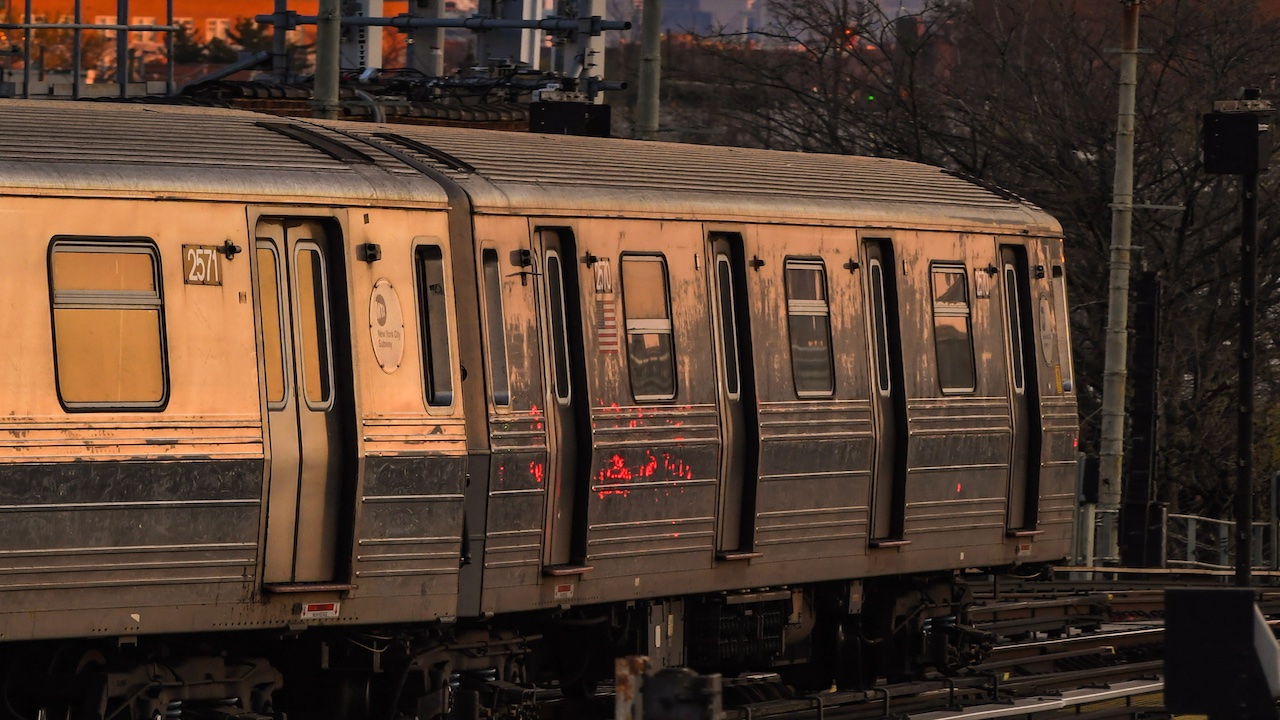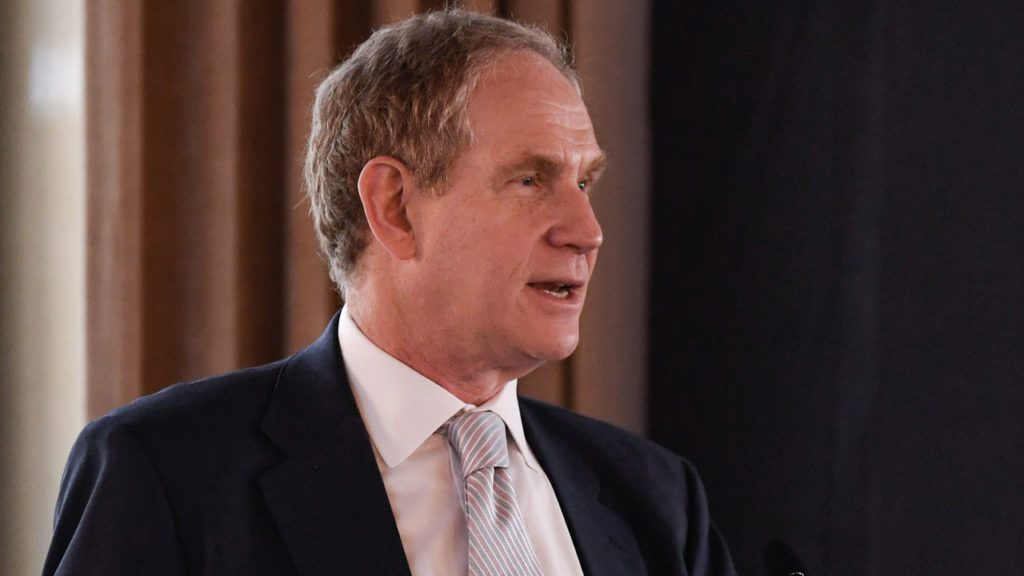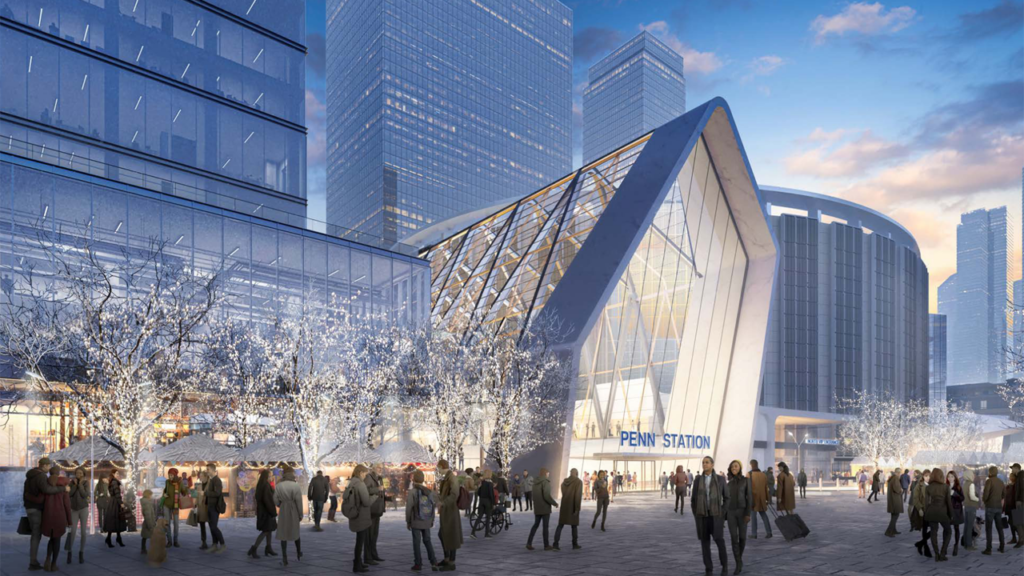
NY MTA Proposes Amendment to 2020-24 Capital Program
Written by Carolina Worrell, Senior Editor
The proposed amendment includes accessibility upgrades, signal modernization and resiliency initiatives, and implementation of Track Trespassing Task Force recommendations. (MTA)
To adjust mass transportation needs for a post-COVID world, New York Metropolitan Transportation Authority (MTA) officials detailed on July 25 an amendment to the Authority’s 2020-24 Capital Program. It would allow projects to move forward at a faster pace; offer support for mega-project expansions; and rebalance priorities while accounting for the pandemic’s impact on external factors, such as inflation, supply chain and labor market issues.
Presented by MTA Construction & Development President Jamie Torres-Springer, the proposed amendment (scroll down to download), includes acceleration of accessibility upgrades at eight MTA Long Island Rail Road (LIRR) stations; modernization of the MTA New York City Transit signal system on the A, C and F lines in Brooklyn and Manhattan; Track Trespassing initiatives, including the Platform Screen Doors pilot, cameras and other technologies; bike and pedestrian accessibility at bridge and tunnel crossings; and renewal of MTA Metro-North Railroad’s (MNR) viaduct along Park Avenue in East Harlem. It builds on the accelerated pace at which the projects were completed during the pandemic, according to MTA.

“This capital program was already the most ambitious in the agency’s history, and COVID has only highlighted its importance,” said MTA Chair and CEO Janno Lieber. “Since the onset of COVID, we ramped up the speed of construction, including accelerating $2.3 billion of work. We also adopted new strategies to complete projects faster and efficiently—utilizing design-build contracts, holding contractors accountable and providing them with smart financial incentives, and leveraging private partnerships—which we will now use on a larger scale on projects that will help close the gap on transit equity across the region.”
“This proposed amendment will enhance equity and address emerging trends by prioritizing projects that serve riders in areas that rely on transit the most,” said Torres-Springer. “It invests in the resiliency of our transit system, increases micro-mobility options, and accelerates safety projects to prevent track intrusions. It also advances critical mega-projects like the reconstruction of Penn Station and connecting the Bronx and MNR to it. All these projects add up to a safer, more resilient, and more equitable transit system for the entire New York City region.”
Implementation of the program resumed following a pause at the start of the pandemic. In 2021, MTA initiated more than $8 billion in projects, with another $8 billion set for 2022. The MTA says it has been able to contain costs in the early stages of the program, with the median contract for projects coming in 8% lower than expected cost. In 2020 and 2021, according to MTA, accessibility projects were completed at the fastest pace in agency history, with 23 subway stations brought online in the two-year span. MTA also made progress on its signal modernization efforts with the installation of communications-based train controlled (CBTC) signaling on the Queens Boulevard E, F, M and R lines.
Elements of the proposed 2020-24 Capital Plan amendment include the following:
MTA’s Signal Modernization Plan
The plan amendment will replace all remaining 80-plus-year-old signal equipment and mechanical interlockings, prioritizing lines that serve essential workers in communities that rely on transit most.
MTA says it will now focus on NYCT’s newly added 6 Av Line (B, D, F and M), an extended Fulton Line (A, C), Queens Boulevard East Line (E, F), and the Crosstown Line (G). Each line will be outfitted with modern CBTC signaling. According to MTA, the A, C and F lines rank among the least reliable subway lines in the system by wait time assessment, the amount of time a customer spends on a platform waiting for the train.
Track Trespassing Initiatives
In the proposed amendment, MTA will move forward with recommendations following the release of a Track Trespassing Task Force report, which detailed a host of actions to address track trespassing and provided new data on the incidence and cause of track intrusion. These recommendations include Track Intrusion Detection technology, such as camera system expansion; the Platform Screen Door pilot program; and continued work with city and state partners.
MTA says its Platform Screen Door pilot program is moving forward with procurement beginning this year.
Micro-mobility
In May, MTA announced a strategic action plan to enhance bicycle, pedestrian and micro-mobility access to its facilities and services. As part of this plan, MTA will improve access to subway stations and bus stops and on MTA bridges.
Under the proposed amendment, it will start at the Henry Hudson Bridge, with a project to create a shared-use path.
Accessibility Upgrade at LIRR Stations
MTA says system-wide accessibility remains a top priority and LIRR accessibility projects will be accelerated. Under the proposed amendment, the following LIRR stations will be made accessible under the Americans with Disabilities Act (ADA):
- Amityville
- Laurelton
- Lindenhurst
- Massapequa Park
- Forest Hills
- Hollis
- Douglaston
- Cold Spring Harbor
By the completion of the program, only five LIRR stations will not be fully accessible.
MNR Park Avenue Aqueduct
MNR’s Park Avenue Viaduct project is being accelerated to extend from the north side of E. 115th Street to the south side of E. 123rd Street in East Harlem, and includes the replacement or repair of major segments of the viaduct.
The elevated steel structure carries four tracks along Park Avenue between E.110th Street and the Harlem River Lift Bridge that services the Hudson, Harlem and New Haven lines. On a typical weekday, MTA says approximately 750 trains and hundreds of thousands of customers travel on the viaduct. Nearly half of the viaduct was constructed in the 1890s.

Expansion Projects
While more than 82% of the Capital Program is dedicated to the existing core infrastructure, MTA says it is “strategically pursuing” expansion projects, including the MNR Penn Station Access and Penn Station Reconstruction projects. These projects, MTA says, are “the key to meeting new needs and addressing historic transportation inequities.”
Penn Station Access will connect MNR’s New Haven Line with Amtrak’s existing Hell Gate Line to Penn Station and bring four new accessible stations to the East Bronx at Hunts Point, Morris Park, Co-op City and Parkchester/Van Nest.
The proposed amendment adds funding for the New Rochelle Yard, which is critical to the project’s operations, and for portions of its rolling stock, which have “long lead-times and need to get procurement under way quickly,” according to MTA. The eventual need for this funding was noted when an amendment was advanced in December 2021 and does not represent a cost increase, MTA reported.
In Nov. 2021, Gov. Kathy Hochul unveiled a new plan to transform Penn Station into a “first-class, commuter-first transit hub” and to revitalize the surrounding area. The plan calls for a 250,000-square-foot, single-level facility. MTA says the revitalization will make Penn Station easier to navigate and allow more room for passenger circulation.
According to MTA, Penn Station Reconstruction is moving foward, and the proposed amendment includes funding to advance preliminary design of the new station.
The full Capital Program Amendment Executive Summary is available below.


